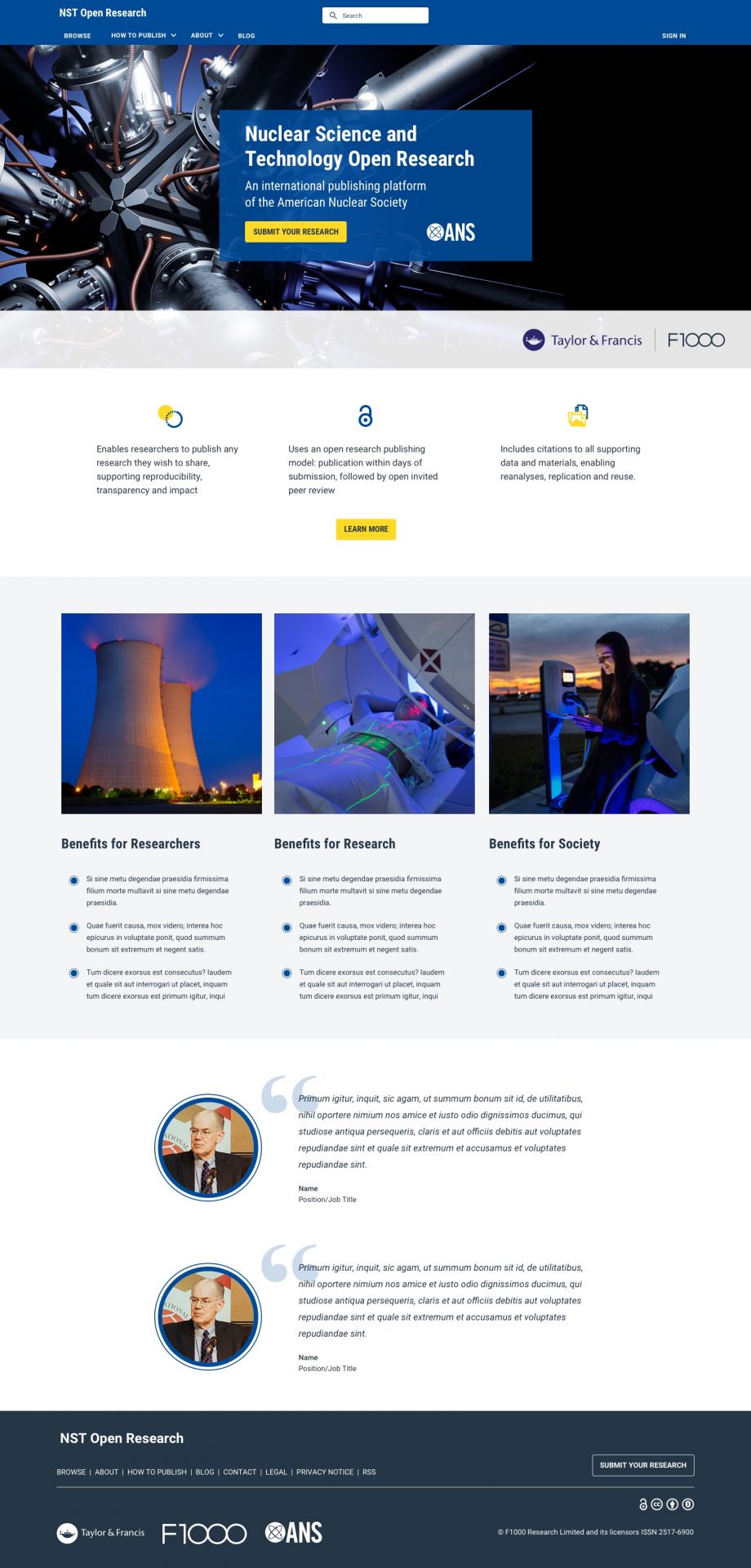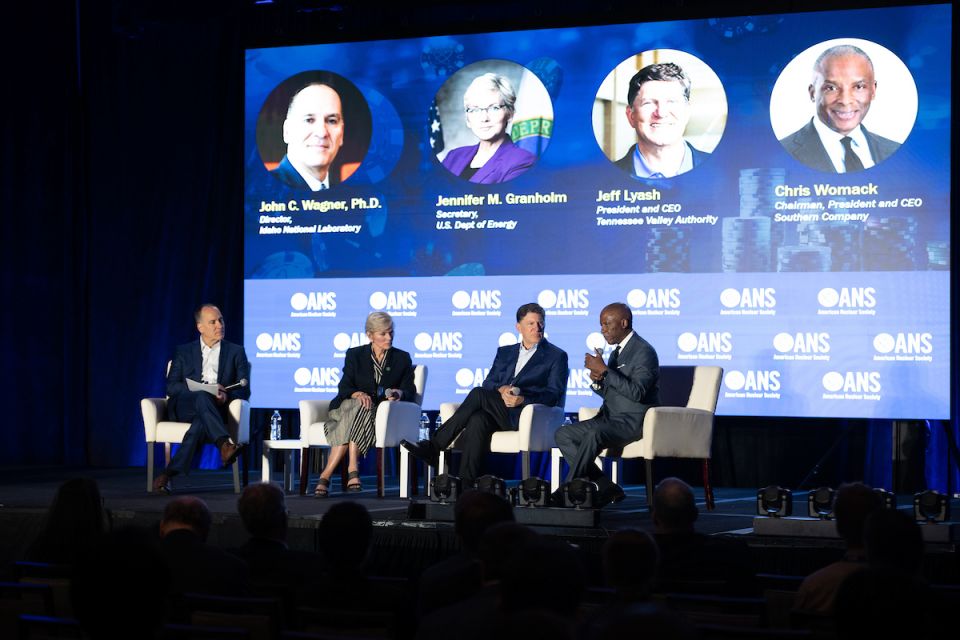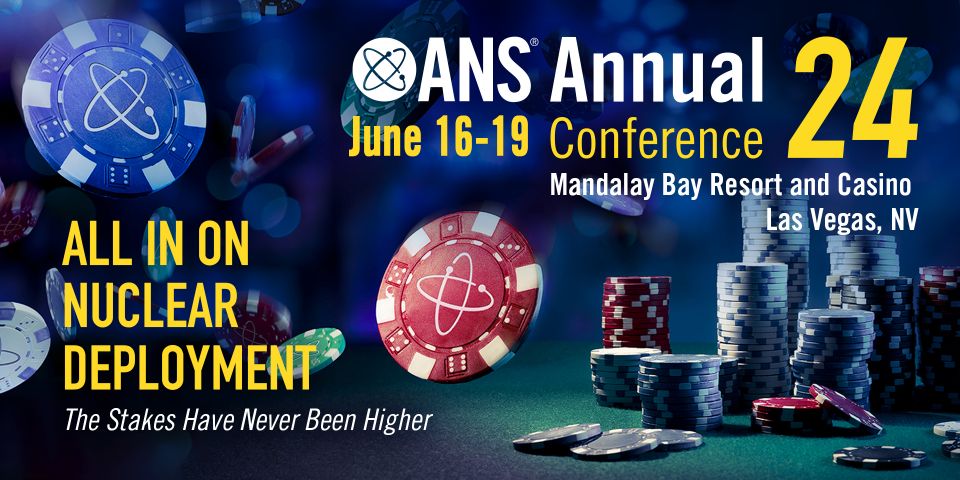“We are delighted to be working with ANS, an organization that understands and embraces open research in a critical field of science and human knowledge,” said Rebecca Lawrence, managing director of F1000. “F1000 looks forward to working with ANS to engage nuclear researchers in open research and its significant benefits, both in the U.S. and worldwide.”
Open research: Making research freely available to everyone, reading without fees or subscriptions, is the concept behind open research publishing. This style of knowledge sharing offers tangible benefits to both authors and consumers. Authors who make their research available on open research platforms receive more visibility, which can lead to more citations and greater influence. Thanks to open research, consumers have the benefit of ease of access to the latest information.
Some supporters of open research believe it is a “fiscal responsibility” (for federally funded research) and “moral imperative” to publish research openly to benefit underserved and underrepresented communities.
“Open research is a significant and growing trend in the publishing world, and this new platform allows ANS members to publish quality content freely available for the public,” Piercy said. “The benefits of open research are clear, which is why ANS is ecstatic to be a leader in the physical sciences by embracing a fully open research publishing option to support and grow our community.”
Knowledge building: F1000’s open research publishing model offers researchers the opportunity to share any sound research output. Platform submission allows for rapid publication of research, thereby accelerating the dissemination of knowledge and the pace of new discoveries. Open, post-publication peer review aims to promote the transparency and rigor of the review and revision process, further promoting transparency and improving the quality of peer review discourse. Once published, all content on the ANS F1000 platform will be available to researchers, teachers, journalists — anyone and everyone — free of charge. Subject to successful applications, research that passes peer review will be indexed in major databases, once successful applications are made, such as Scopus.
Alongside the ability to publish any research and support all stages of the research journey, aiding further discovery and knowledge building, the bespoke ANS F1000 platform will feature gateways (a dedicated space on the platform for each division) and collections (compilations of related research).
ANS Publications director John Fabian said, “The way that we are envisioning the platform is to allow each ANS professional division to have its own ‘gateway’ that could contain content from members in those fields. I see these professional division gateways as places that allow for the transfer of knowledge within divisions, a place for established professionals to share work with the younger generation in the nuclear community, as well as a place for young members to publish their early research and get feedback from more established members of their professional division. I am really excited for the possibilities of this platform, but it will require the full support of our professional divisions to make this a success.”
The ANS F1000 platform will require up to six months to build, with a target launch date of early 2023. The ANS Publications Department staff will provide updates to the membership while the new platform is built in consultation with F1000.
“I firmly believe that adopting OR publishing is integral to sustaining ANS publishing activities into the future,” Fabian said. “With the support of our members, our donor Mr. Jain, and F1000, we can make ANS a more open, inclusive, and supportive publishing community for the next generation of engineers and scientists.”
About ANS: Founded in 1954 as an international professional organization of engineers and scientists devoted to the peaceful applications of nuclear science and technology, ANS is home to two magazines (Nuclear News and Radwaste Solutions) three peer-reviewed academic journals (Nuclear Science and Engineering, Nuclear Technology, and Fusion Science and Technology). All three journals are printed by Taylor & Francis, with Nuclear Science and Engineering being the first and oldest peer-reviewed journal in its field since 1956.








